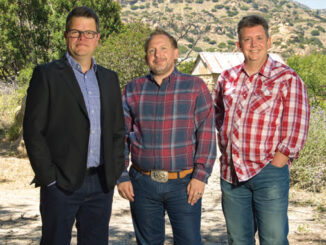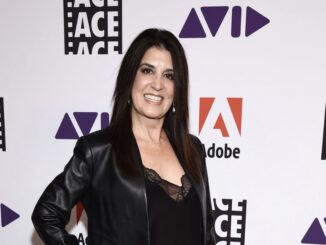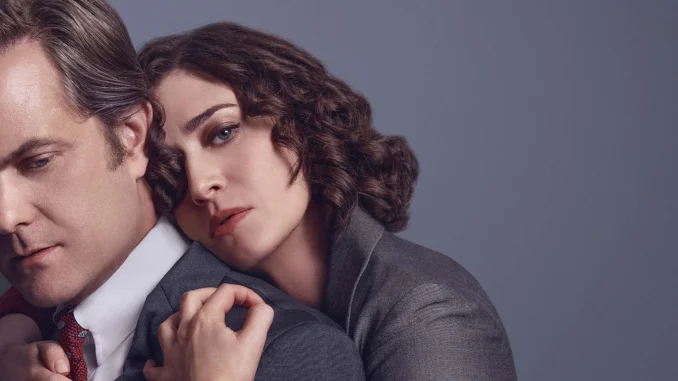
By Peter Tonguette
In the late 1980s, few feature films were as talked about, argued over, or widely seen as Adrian Lyne’s “Fatal Attraction.”
The 1987 Paramount Pictures release starred Michael Douglas as Dan Gallagher, a well-to-do attorney and apparent family man who betrays his wife Beth (Anne Archer) and daughter Ellen (Ellen Hamilton Latzen) for what he intends to be a cursory dalliance with Alex Forrest (Glenn Close). In time, Dan discovers that his feckless affair has profound consequences. The movie was nominated for six Oscars, including Best Picture, as well as Best Film Editing for picture editors Michael Kahn, ACE, and Peter E. Berger, ACE.
In today’s cultural climate, few properties might benefit more from a thoroughgoing reimagining than “Fatal Attraction” — which is exactly what executive producer, writer, and showrunner Alexandra Cunningham has done in the eight-part television version of “Fatal Attraction” that began airing on Paramount+ in April.
This time, Joshua Jackson stars as Dan, Lizzy Caplan as Alex, Amanda Peet as Beth, and Alyssa Jirrels as the adult Ellen (Vivien Lyra Blair plays Ellen as a child). More important than the updated casting, however, is the updated perspective. No longer is the hugely flawed Dan the object of audience identification; instead, equal time is given to the traumas experienced by Alex, Beth, and Ellen. The drama is played not just for thrills but as a provocative conversation-starter about sex, gender, and power.
Five picture editors — Elizabeth Cirillo, Crystal Lentz, Pamela March, Anthony McAfee, and Rita K. Sanders — were responsible for bringing to life this bold new spin on “Fatal Attraction.” CineMontage recently spoke with each of them.
CineMontage: Rita, you worked on the first three episodes. What drew you to the series?
Rita K. Sanders: I hadn’t seen the original film since it was on VHS many years ago, and the only thing I knew about it was what we all sort of culturally know, which is that women are crazy. I had just come off of three seasons of editing the [Netflix] show “You,” which was a fantastic experience, but I literally said, “I don’t want to kill any more women.” I told the showrunner that. Then “Fatal Attraction” called, and I had worked before with Alexandra Cunningham and loved and trusted her. I said, “Thank you, Alex, for your call, but I don’t want to do this show. I don’t want to kill any more women.” She said, “Let’s just talk about it for an hour on Zoom.” By the end of the Zoom, she had completely convinced me that the one thing I knew about the movie was not what this show was going to be about.
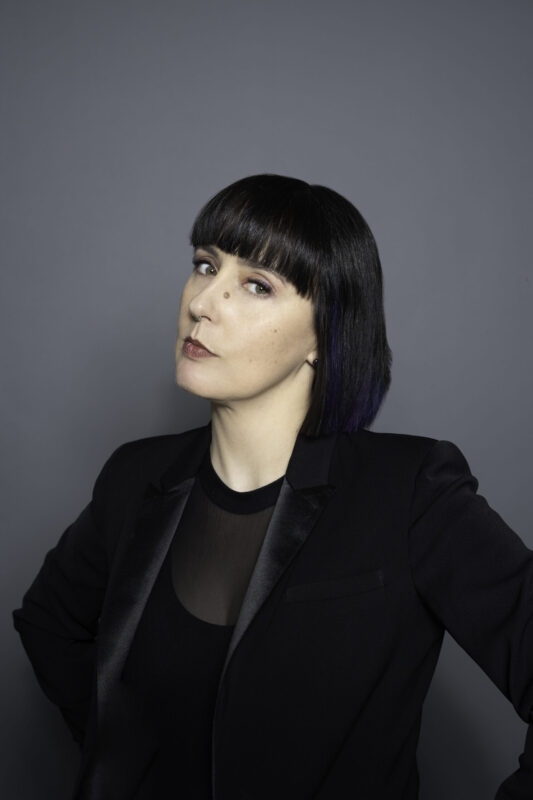
CineMontage: What did Alex Cunningham say that made you think the show would be different than the film?
Sanders: Alex talked about delving into the wife, the daughter, the repercussions of the affair for everyone in Dan’s orbit. She told me how they were going to go into Alex Forrest’s past and what made her the way she was. That’s what made me want to do it.
CineMontage: The original movie is quite different than the reboot, isn’t it?
Anthony McAfee: It had been a long time since I had seen the original, so I had to go back and watch it to refresh. It’s such a tight movie. It’s so streamlined and fast-paced in a sense. On the show, it was nice to live with these characters and dive back into the psychology.
Pamela March: I saw the original in the theater. That movie blew my mind, as well as [those of] all of the audience out there. If you told young teenager Pam that she’d be working on a revamped series later in life, she’d be pretty stoked. It’s cool to see the new life that it’s been given. We learn more about Alex Forrest and her traumas and mental illness struggles.
CineMontage: Elizabeth, in addition to serving as an assistant editor on the first three episodes, you also co-edited Episode 2 with Rita. What interested you in the project?
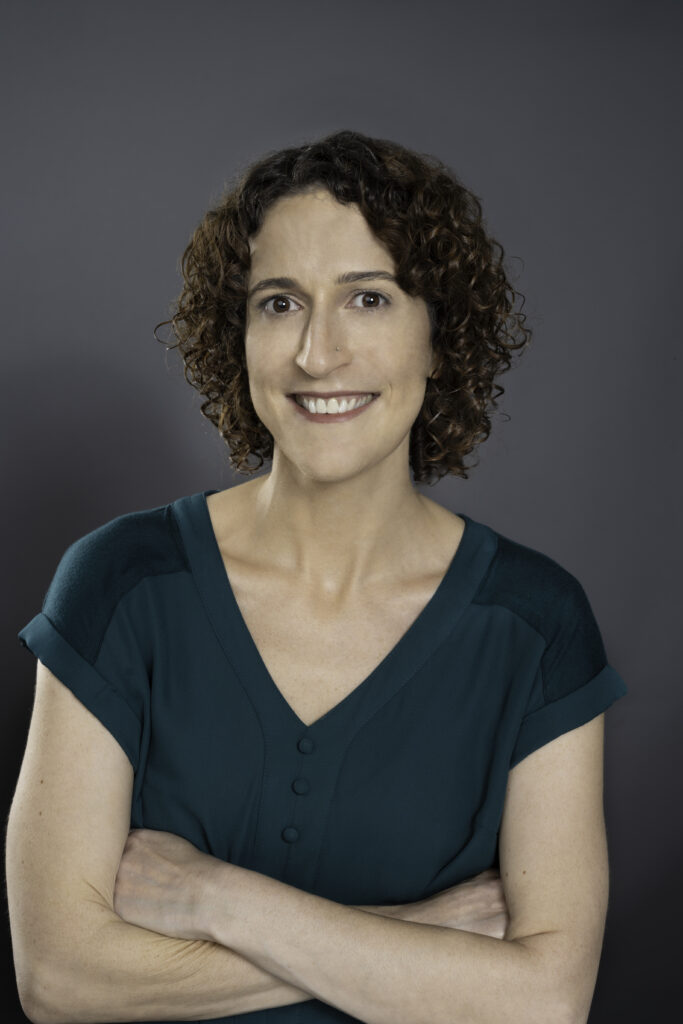
Elizabeth Cirillo: I wanted to do this show for many reasons. Here was this grand opportunity to work with a majority female crew in terms of the top positions: majority female directors, a female showrunner, and majority women in post. I was just like, “I need to be on this.”
CineMontage: Do you think that female perspective influenced the show?
Cirillo: Absolutely. I like using the term “reimagination” because I don’t believe that the series is just an extension of the movie. We have three powerful female characters on our show [Alex, Beth, Ellen]. I was completely captivated by jumping back and forth in time, following their stories, how decisions influenced the next generation. And I think having female editors tell female stories is an added bonus.
Crystal Lentz: I think it’s the time period that we’re in more than necessarily the feminine point of view. The world has changed, our understanding of mental illness and what people do to each other as individuals has evolved. I don’t necessarily think it’s about women versus men. It’s just about acknowledging our current time period. I’m very curious if this is made again 20 years from now, what then are we going to think is outdated?
Sanders: I think having such a hearty amount of women as the first audience was really valuable so we could all check in and make sure we were representing everybody correctly.
CineMontage: The show offers a deeper dive into each character.
Sanders: Because of the segmented way the script worked, there was an episode that was just Beth’s and there was an episode that was just Alex Forrest’s childhood. The editors were all kind of responsible for these very encapsulated parts. It did feel a little bit like we were all doing our own separate character study.
CineMontage: As editors, is it difficult to keep all of those plates spinning?
Sanders: I was very lucky in that they shot the first three episodes with one director, and they cross-boarded all the episodes at the same time. The first three episodes were cut all simultaneously with one director, so it was just like doing a three-episode pilot.
Cirillo: We were getting footage in daily for all three episodes, and the cuts were on top of each other. We had to find ways to look at how this is being portrayed in Episodes 1 and 2 versus how we’re going to show it from Alex Forrest’s perspective in Episode 3. It was really a balancing act of: “OK, we’re going to stay away from this set-up where we have an extreme close-up tilting down at Alex for Episode 2 in the bar scenes, because that’s going to be her special perspective in the next episode.”
CineMontage: Rita, how did you and Elizabeth work on Episode 2?
Sanders: This was the first time I had worked with Elizabeth as an assistant editor, and it was very clear to me quickly what a good editor she was. On Episode 2, she took the first half of the episode and I took the second half. She cut the sex scene, and a frame of it did not change.
Cirillo: You immediately start on this one-on-one “date” [between Dan and Alex Forrest], and you have to build this intimacy between them. I wanted women to immediately feel a closeness to this, like, “I’ve been in this situation before.” The flirting leads to this and to that, and finally to the big sex scene. Building the intimacy that led to it was such a journey.
Sanders: She absolutely nailed it. We changed the music — we were using temp score — but edit- and picture-wise, it did not change at all.
CineMontage: Crystal, taking center stage in Episode 4, which you cut along with Episode 6, are the adult Ellen and Beth.
Lentz: It ended up being framed from the point of view of Ellen coming to terms in therapy. What was this like for her mom [Beth]? Giving a voice to that point of view of the wronged woman who not only just has to deal with the fact that her husband had this affair, but it’s about to destroy her entire life, her dreams for herself and her daughter, and her dream home and losing her mother. It’s a lot to watch her go through.
CineMontage: How did you avoid making Beth appear like a victim?
Lentz: I leaned into the writing and then the performance. That’s what drew me to the project in the first place. Alex Cunningham made sure that Beth had a very independent life, she’s got her own business, and she has her own relationship with [friends] Arthur and Julia [Brian Goodman and Holley Fain]. With the way Amanda played her, there’s just something about her where she can turn on this inner strength. You can’t take that off the screen.
CineMontage: Pamela, you edited Episode 5 as well as the finale, Episode 8.

March: I want to give a shout-out to my assistant editor, Jessica McGovern. Editing is a collaborative process, and there are oftentimes where I’ll edit multiple versions of a scene and she’s my go-to sounding board: “Which one of these works better for you and why?”
When I read the scripts for 5 and 8, I was very excited because I got to have murders in both of mine. I was like, “Yes!” Rita set up the beginning story in the first three episodes, and Crystal before my first episode, and we would all talk with each other. Basically, there would be scenes that would be one character’s point-of-view, and in my episode, it might be a different point-of-view. It was more fun because it wasn’t traditional editing. We got to live with one of the characters as they process through their eyes. You’d be playing a lot of dialogue off-camera on other characters as you live with this one character — their reactions and how they’re thinking in the moment. That was fun and unique to this project.
CineMontage: Anthony, tell me about cutting the next-to-last Episode 7.
McAfee: It was really about Alex Forrest’s relationship with her father, and how these interactions with her molded how she interacts with other people. He’s really kind of a manipulative father in a sense, but early on, you could see how he was very attentive and very responsive to her. He makes it seem like they’re best friends, but whenever he feels slightly betrayed, he just does this 180 and pulls away. You could see that as a super-young daughter, she would want to appease her father.
CineMontage: Rita, why was it important that every major character’s perspective was reflected in the series?
Sanders: Our default — as viewers, as a society, as people who program, purchase, and consume television — tends to be the cisgendered, straight white man, which Dan is. He is so inherently a “default” character that everyone involved in the production wanted to make sure that all of the other characters — most of them around him are women, not all of them — did not only exist to service Dan’s story but to have their own stories. Being ladies in editorial, I was so cognizant of that. I think we put a lot more of our own hearts into it, a lot more of our own empathy. It felt really important to not let Dan be the default — because he’s not a great guy.



